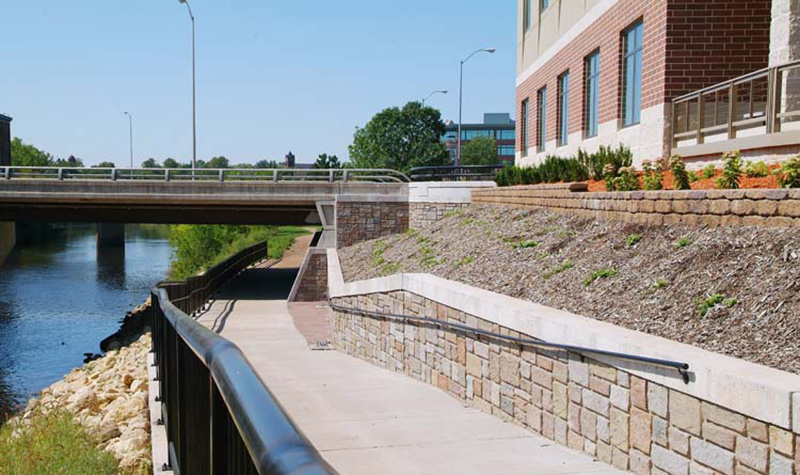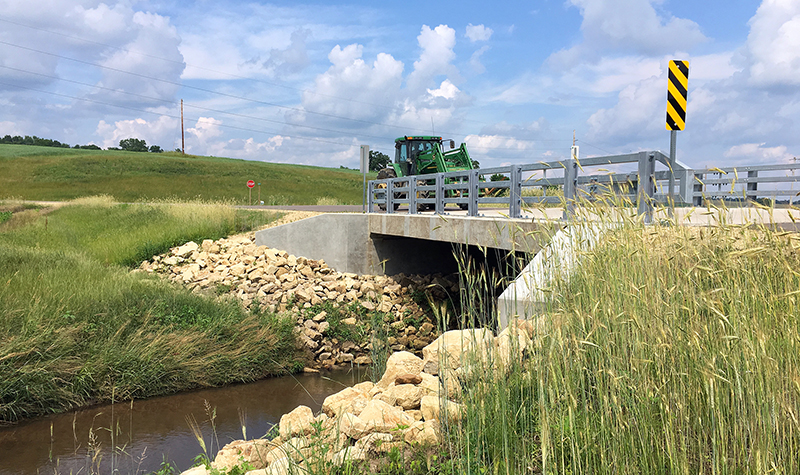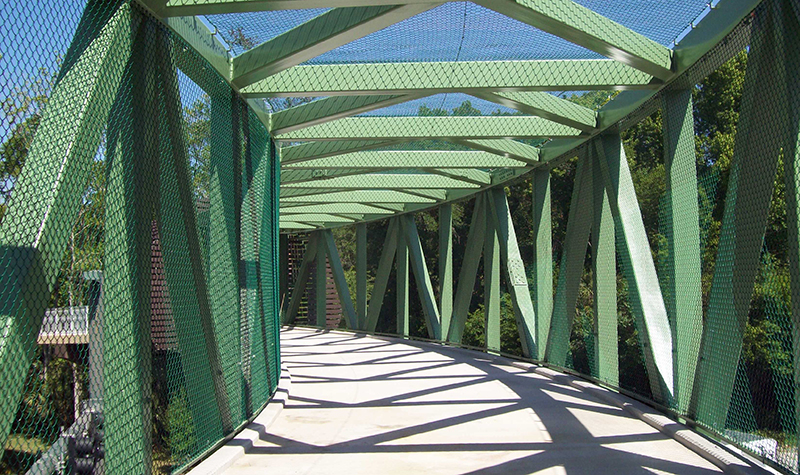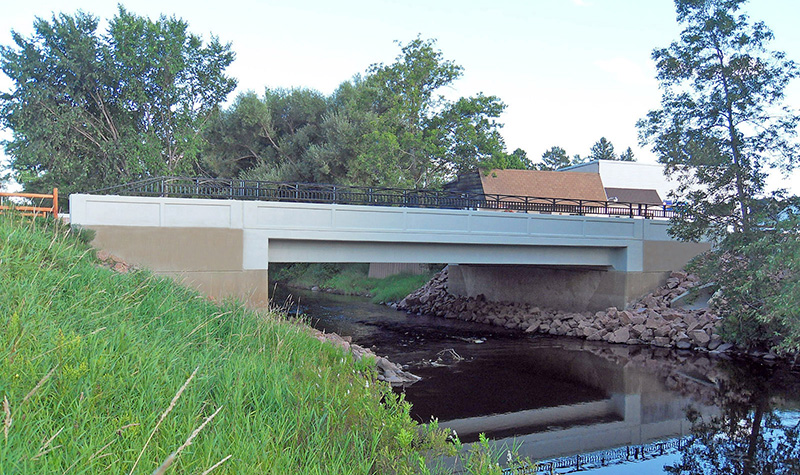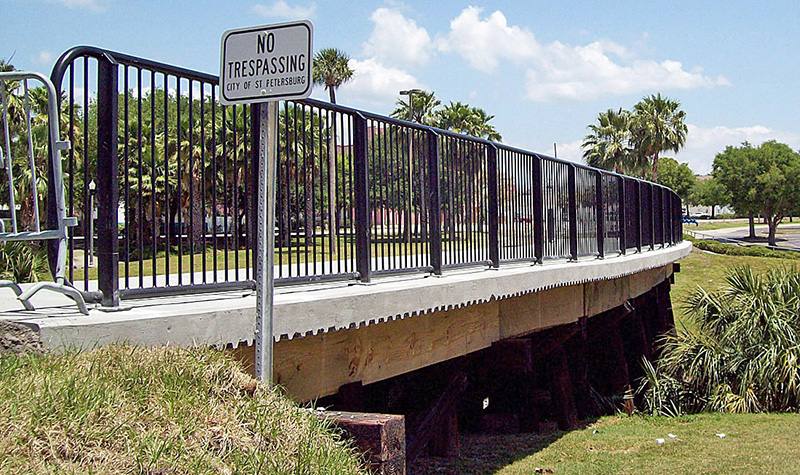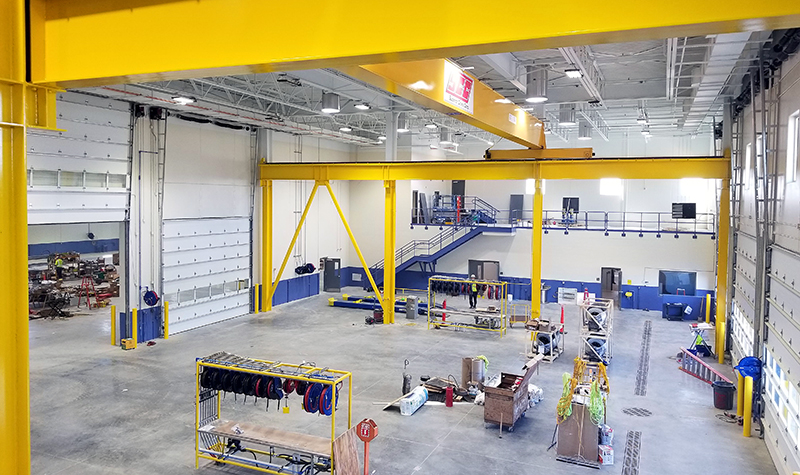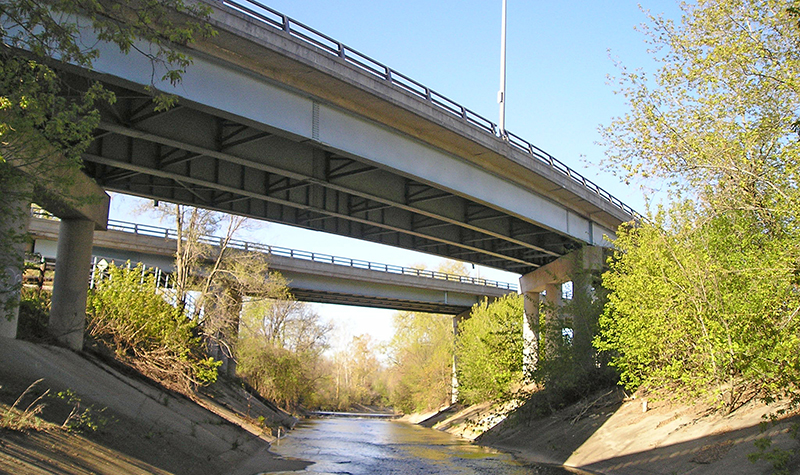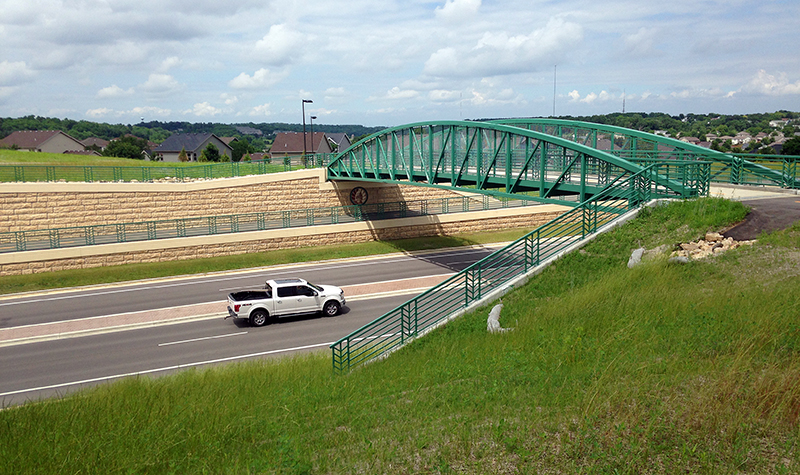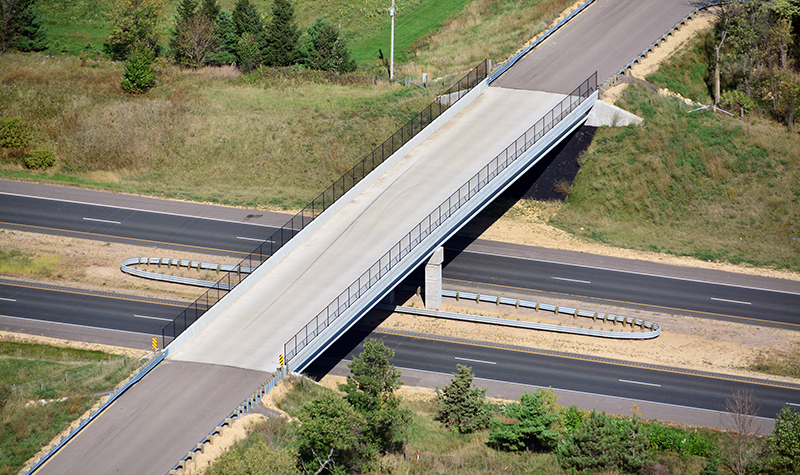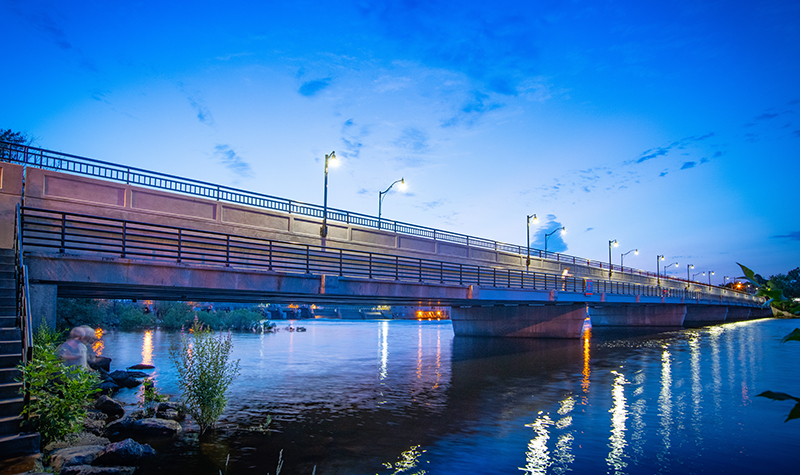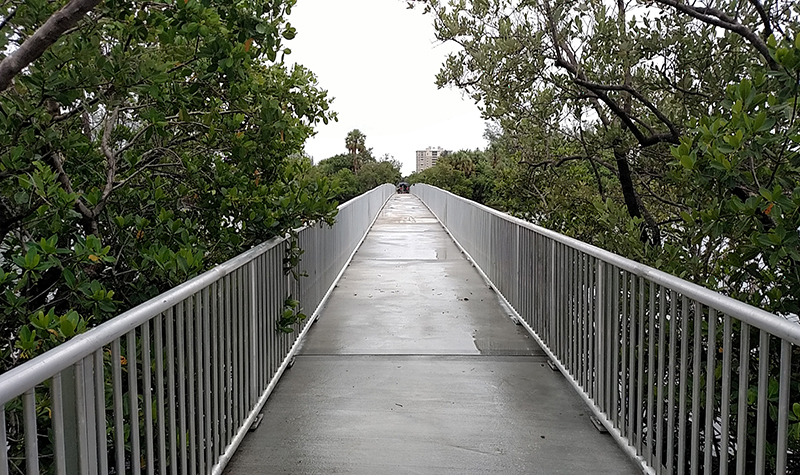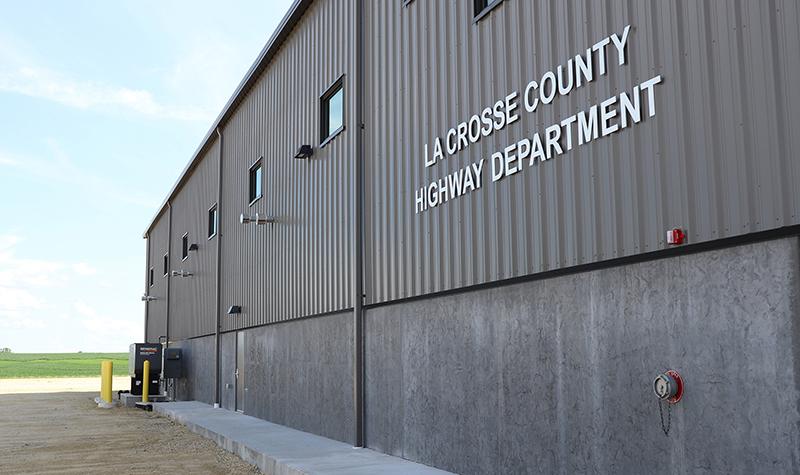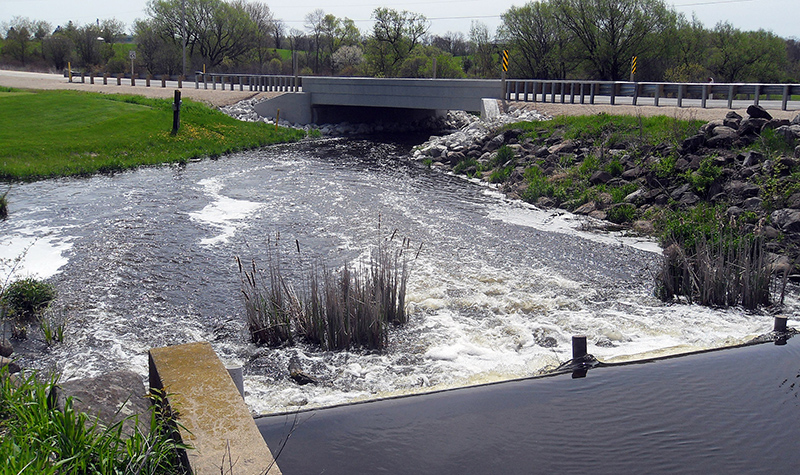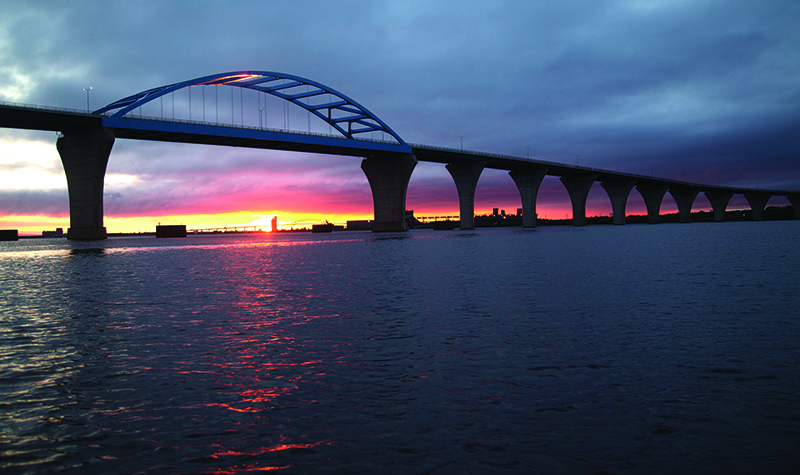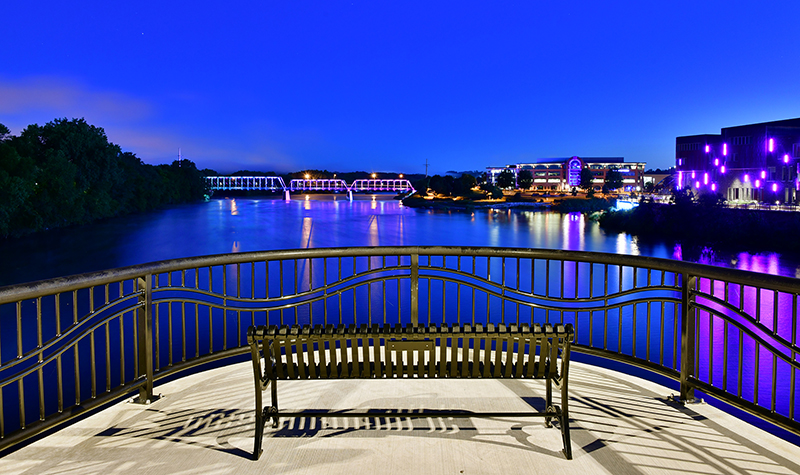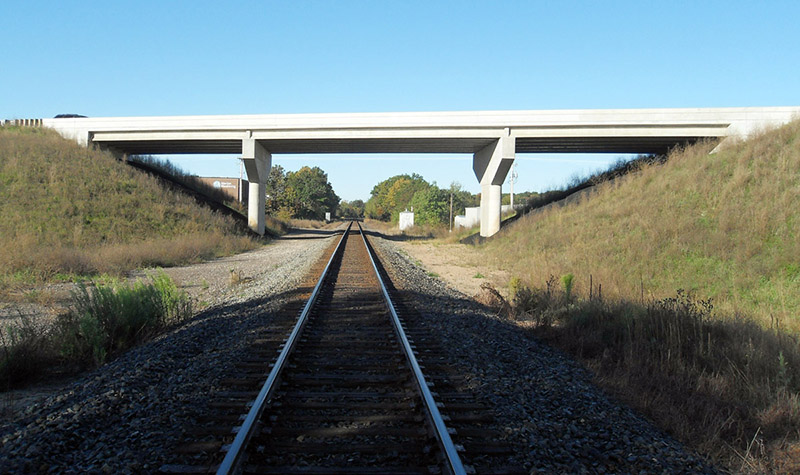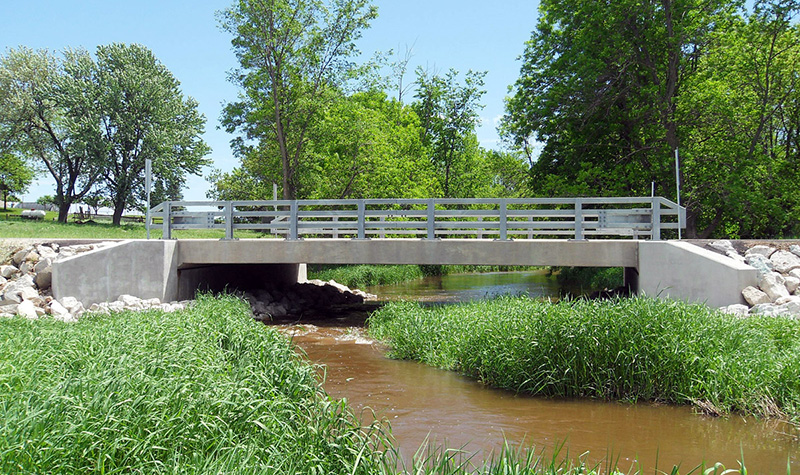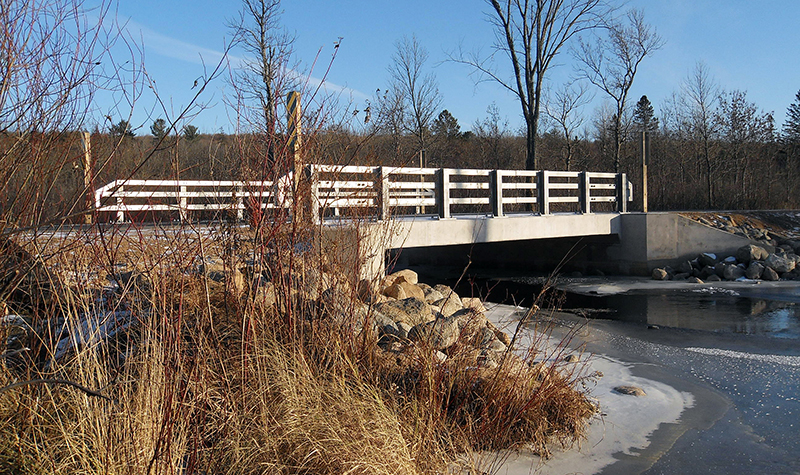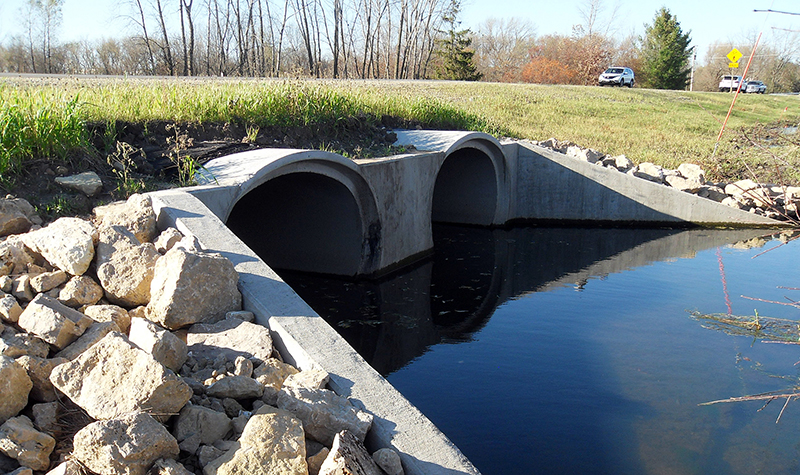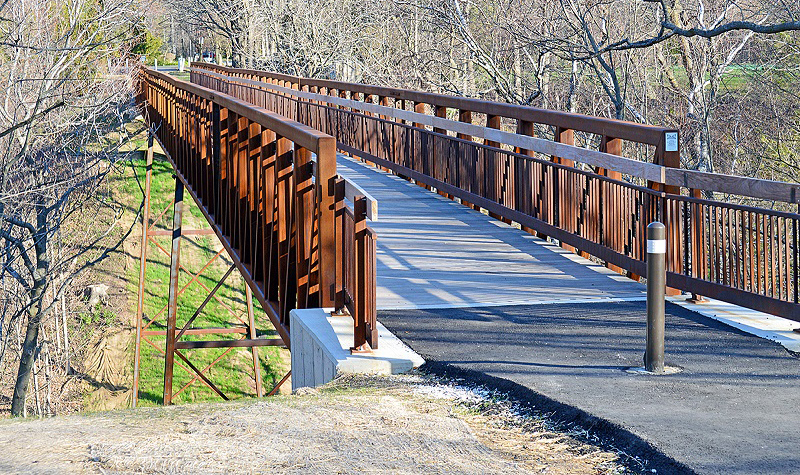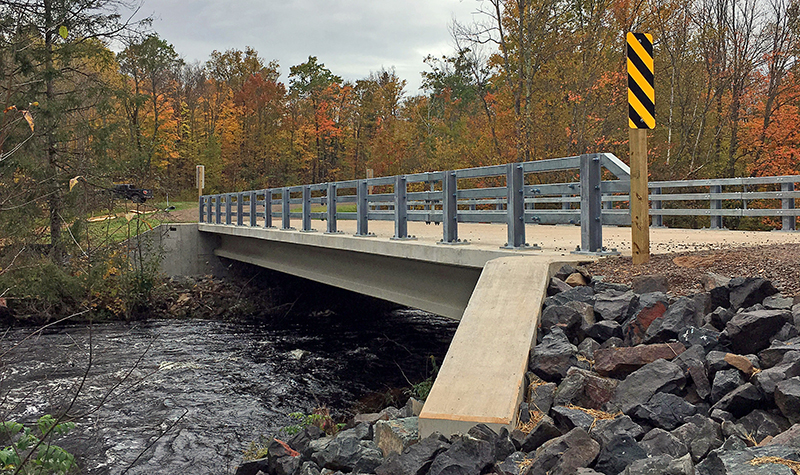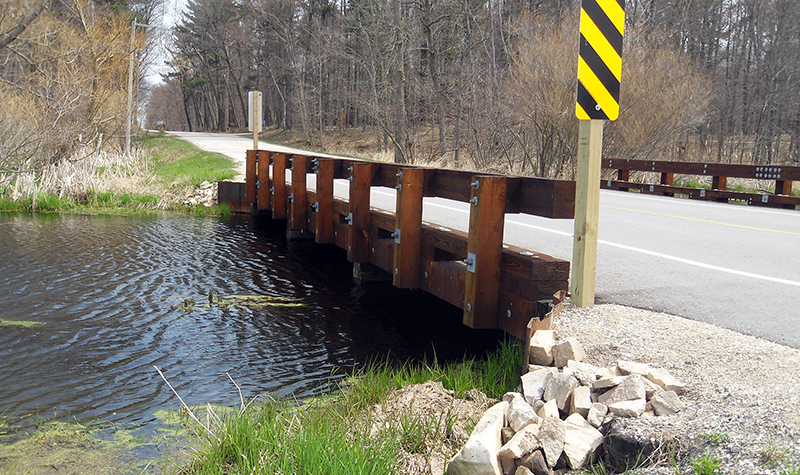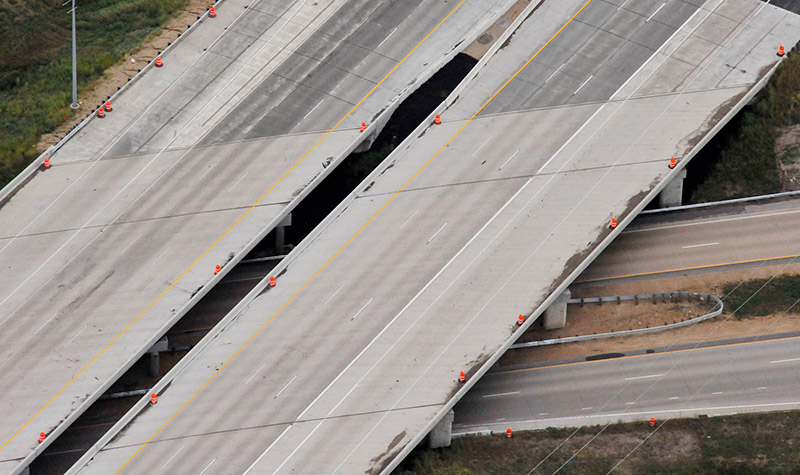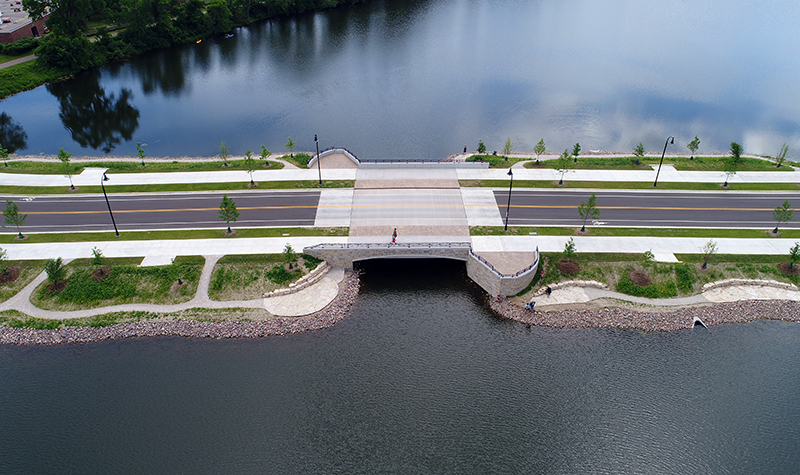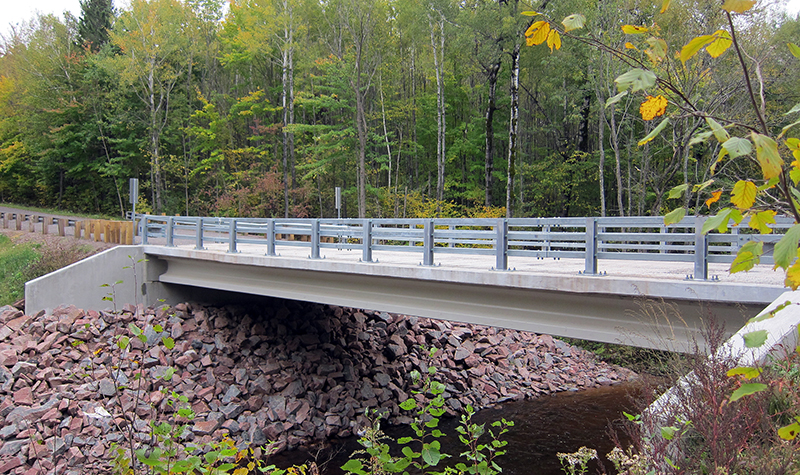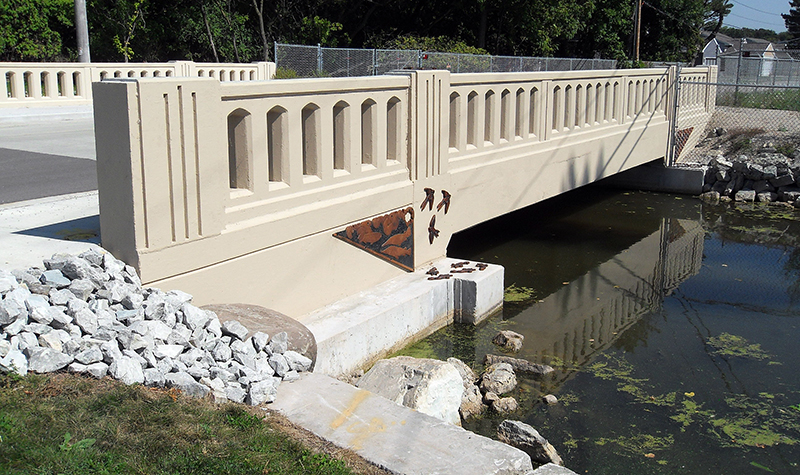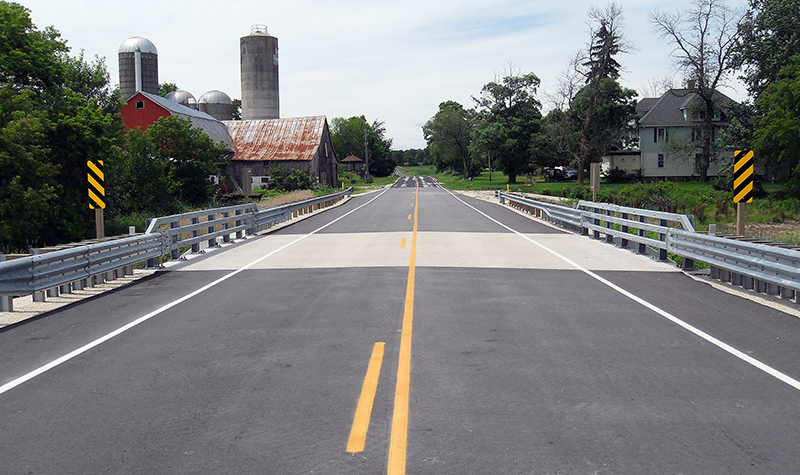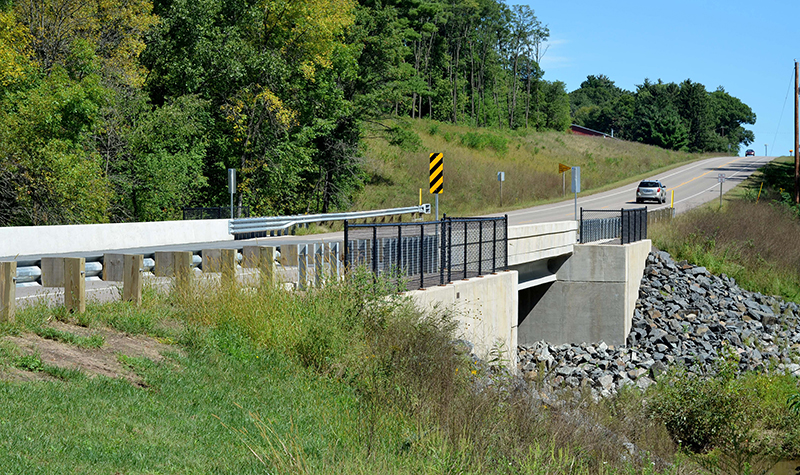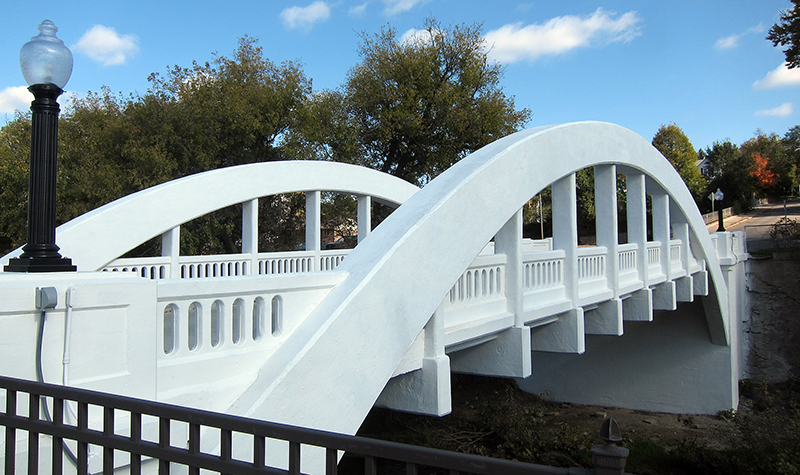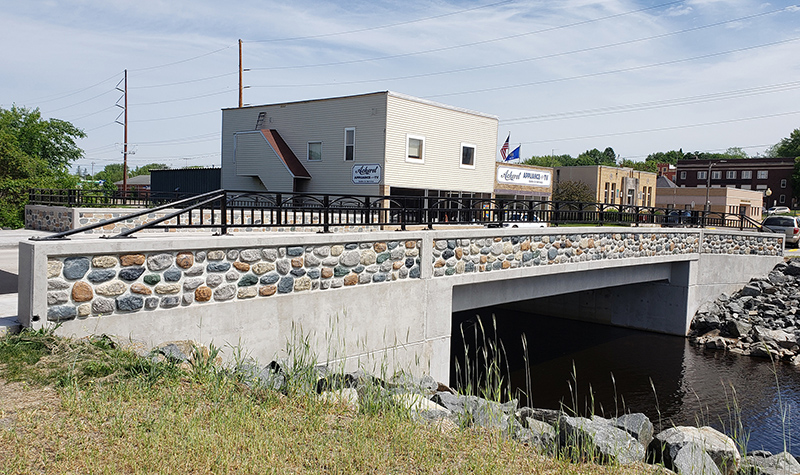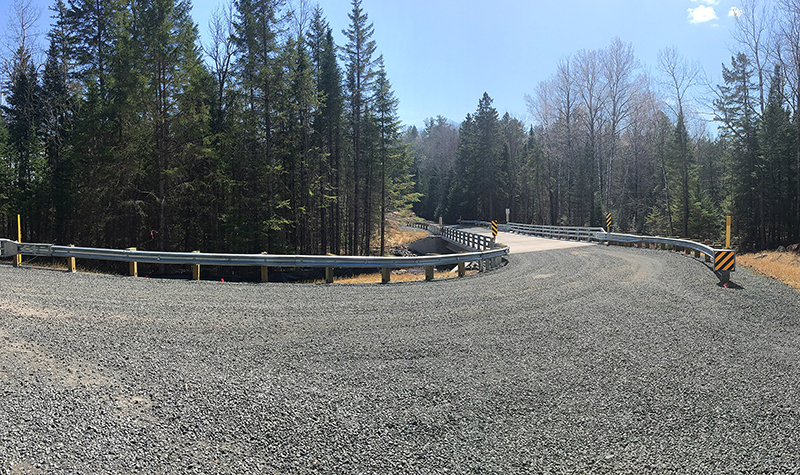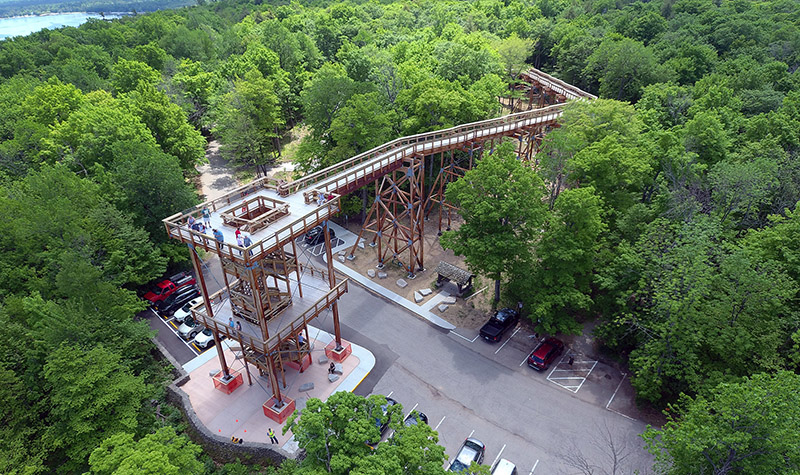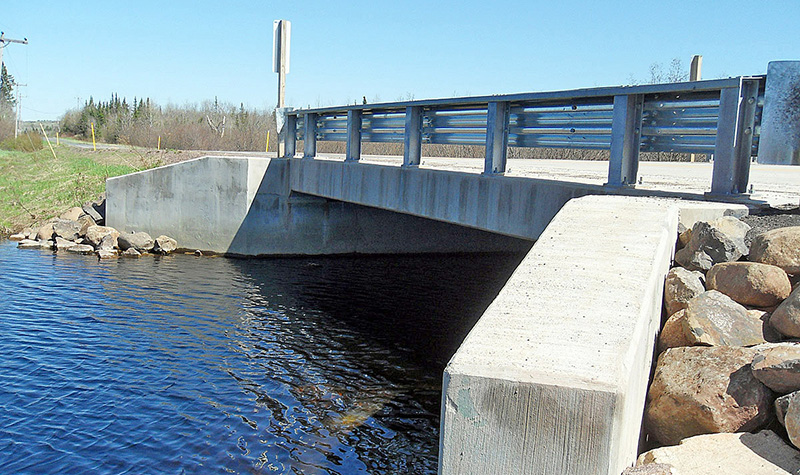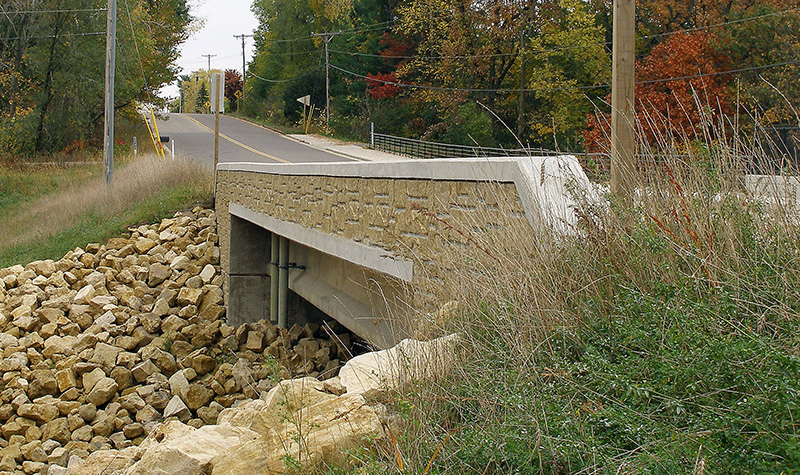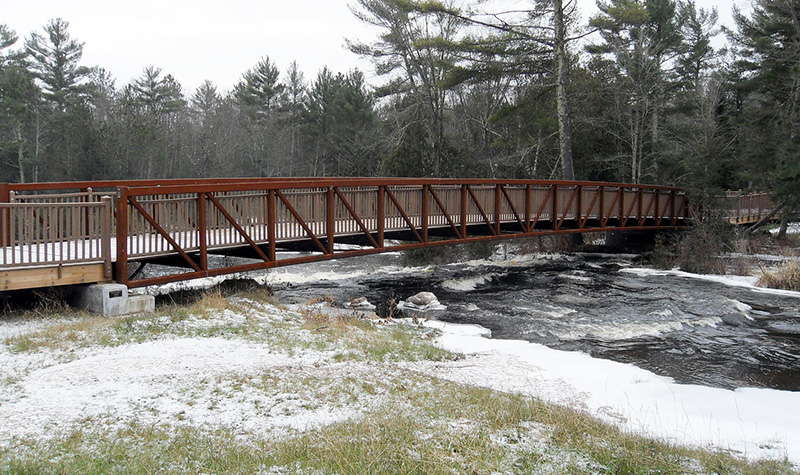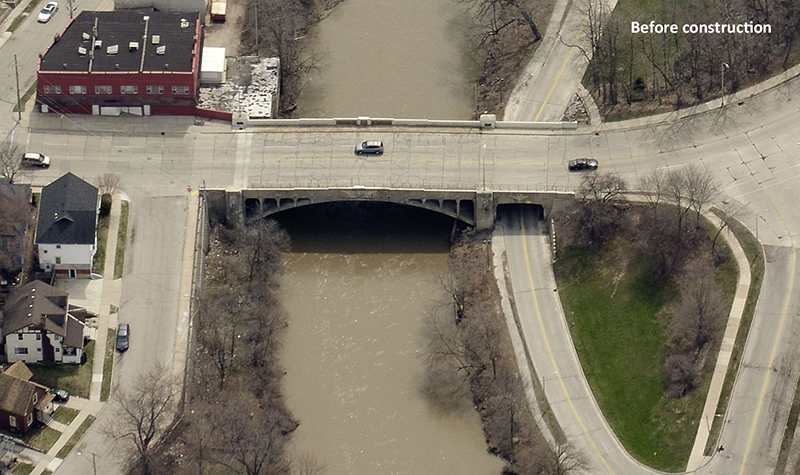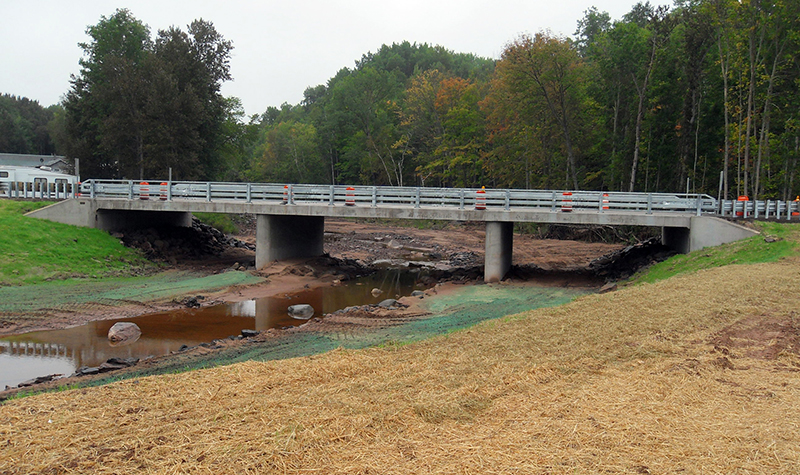Union Pacific Railroad High Bridge Bike/Pedestrian Facility
« Return to Project SearchAyres has had the honor of completing two projects on the Union Pacific Railroad High Bridge, which was built over the Chippewa River in Eau Claire in 1881. Having designed the conversion of the bridge to pedestrian use with a new timber deck and railings completed in 2015, Ayres sprang into action when deterioration of one of the bridge’s 1881 piers left the signature bridge’s future in doubt in 2021.
The American Public Works Association and the Wisconsin chapter of APWA each gave Ayres a 2023 Project of the Year Award in the Historical Restoration/Preservation category for the project. The awards were given in the small cities / rural communities segment of the APWA recognition program.
The bridge, which affords pedestrians and bicyclists stunning views from high above the river between First Street and Forest Street just north of downtown, is on the National Register for Historic Places. The bridge is approximately 898 feet long, including two 80-foot double intersection Warren deck trusses at the approaches and four 180-foot main spans that are believed to be the only quintuple intersection lattice deck trusses in the nation.
In June 2021, the City closed the pedestrian bridge when a failure was discovered at the top of one of the 140-year-old limestone and sandstone piers. Stones on the north and south ends of the pier had failed directly under the bearings at the bottom of one of the bridge’s massive 450,000-pound main spans. That left this span resting precariously on the compromised pier.
Deeming the bridge important enough to mount an extraordinary effort to save it, the City immediately called upon Ayres, with its previous knowledge of the bridge, to provide initial advice on the bridge’s condition and then to provide accelerated design services, prepare plans for repairs, and observe the work of contractor Kraemer North America. It was imperative that all this critical design and construction take place between the June 2021 discovery and March 2022, when the Chippewa River’s high spring flows generally begin. Repairs required building a rock causeway across much of the river to allow construction equipment to be positioned mid-river through the fall and winter. Spring flooding would threaten the rock causeway and the environment surrounding it if it were washed away.
The rapid design work resulted in detailed plans for the replacement of approximately the top 40% of the affected pier after Kraemer constructed temporary shoring towers to take the load of the massive truss off the pier. Ayres’ pier design replaced the top portion of the pier with steel reinforced concrete. The exterior of the concrete was stamped in a pattern to resemble the limestone and sandstone used to construct the 140-year-old piers.
In addition, the top several feet of the bridge’s other two rock piers were encapsulated and reinforced by placing poured-in-place, steel-rebar-reinforced collars around the tops of those piers. Joints between the rock slabs of all three piers were also tuck-pointed to mitigate future weathering. The bearings throughout the bridge were refurbished to make them function better amid changing temperatures that cause the steel structure to expand and contract. Also, reinforced concrete collars were poured at the base of three piers to address undermining that was beginning to occur just below the waterline.
Among the major challenges of this emergency project was the lack of original construction drawings from 1881. Drawings can generally be found for bridges as old as 80 years, but not so with such old railroad bridges. So there was uncertainty about what constituted the piers until construction began. Were they solid rock slabs throughout, or was there sand at their core? They turned out to be solid. Having the railroad structural division of Kraemer on the team provided critical background on issues the team needed to watch for on the old bridge. As discoveries were made during construction, Ayres was on site to provide expert guidance and adjust design details where necessary.
Construction of repairs and removal of the rock causeway were completed in March, in time to reopen the bridge before high waters arrived.
Original Pedestrian Conversion Project
Ayres provided the design that allowed the bridge to be opened in 2015 as a biking and pedestrian destination in Eau Claire, which in the 21st century has become known as the City of Bridges.
The project replaced rotted railroad ties, and two large sections of 8-foot-long ties were replaced with longer ties to achieve a clear trail width of 10 feet on the bridge. Decorative, pedestrian-scale lighting poles and attractive wire screen railing were attached to the ties, and wood decking was attached to the ties at a 45 degree angle to the direction of travel to provide a smooth ride.
Five overlook platforms were constructed as part of the new deck, three facing downstream and two facing upstream. Railings protect trail users along parts of the approaches where the terrain drops off steeply from the edges of the trail.
The west approach was designed to tie the end of the bridge to west-side trails branching out from that location. Special attention was given to address safety for eastbound bicyclists descending from the east end of the bridge toward Forest Street. Signage warns cyclists of the steep grade, and stop signs at Forest Street further control their movement so they do not accidentally roll into Forest Street, where sight lines are diminished by curves. This approach brings trail users to the sidewalk along Forest Street, which in turn leads them to nearby Phoenix Park and the rest of the City’s trail system.

Project Information
Client's NameCity of Eau Claire
LocationEau Claire, WI
Primary ServiceStructural Design & Analysis
MarketLocal Government

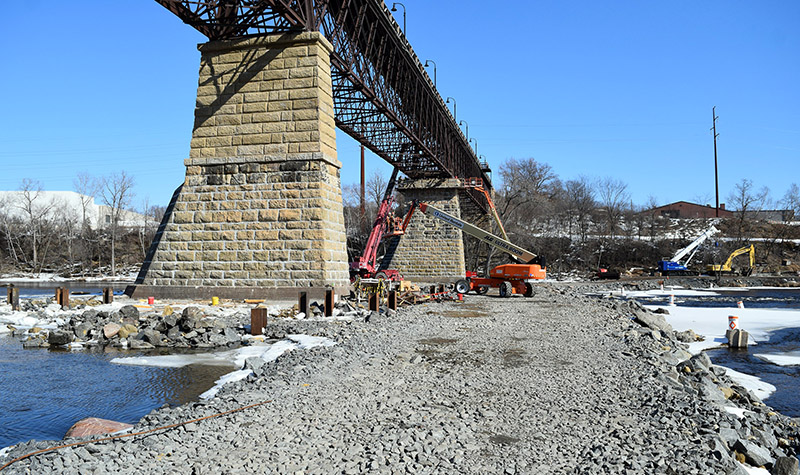
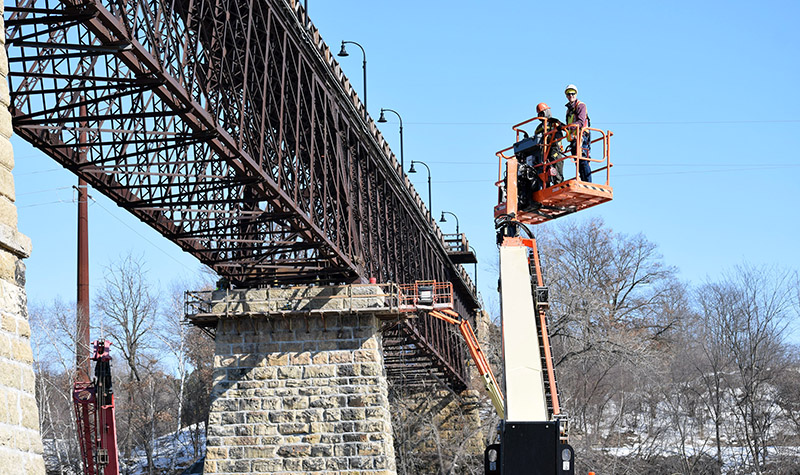
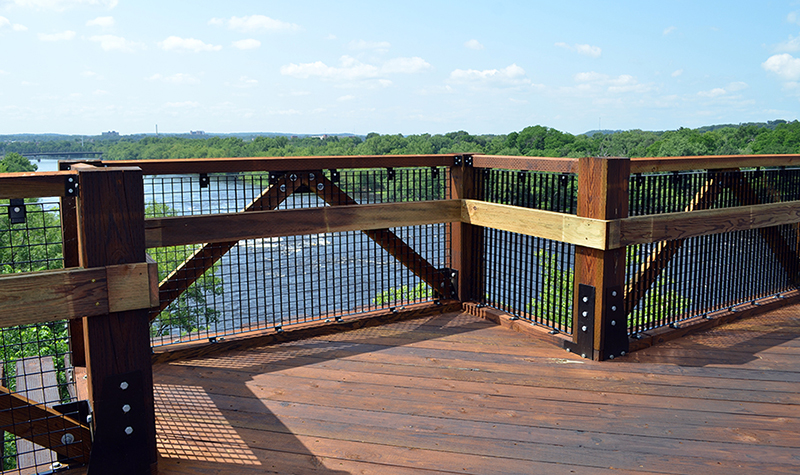
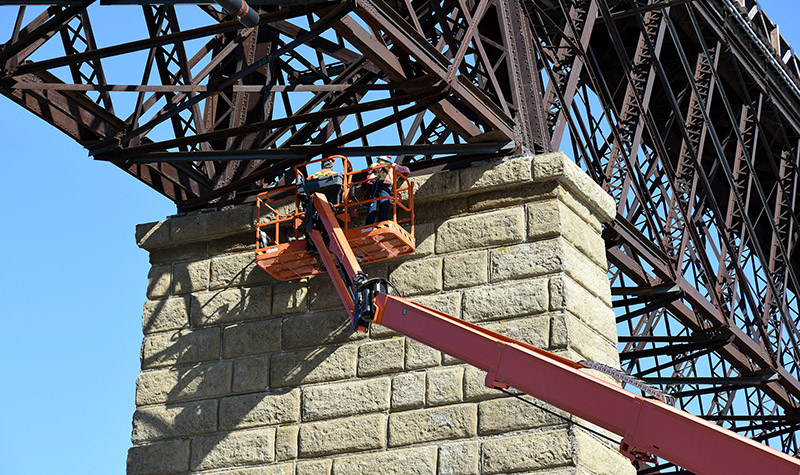
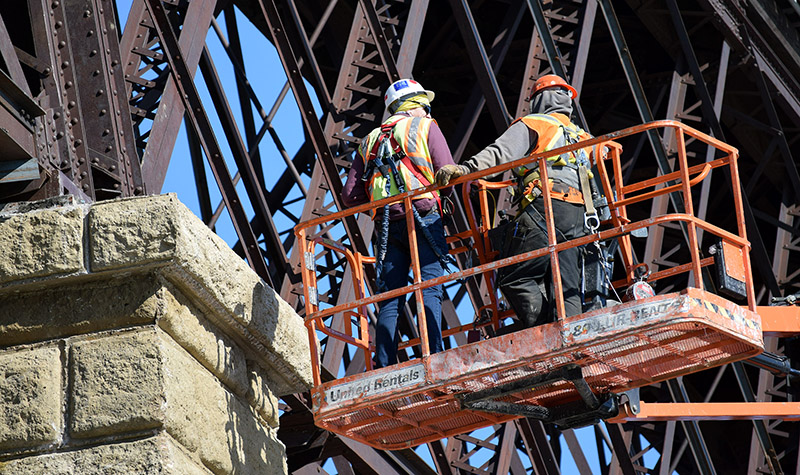
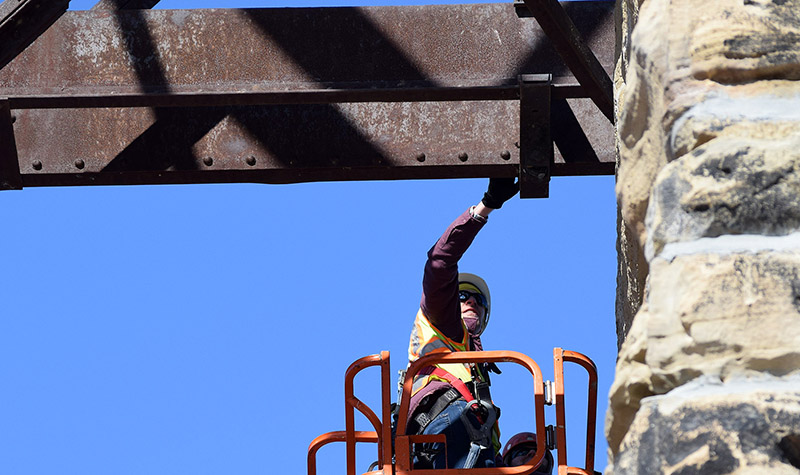
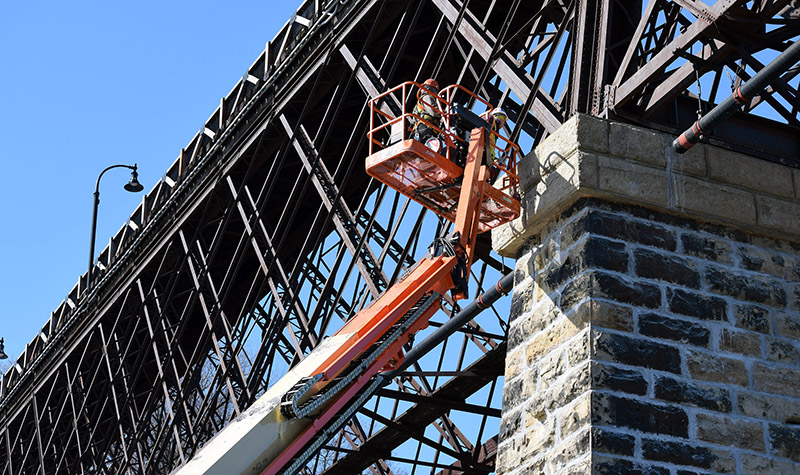
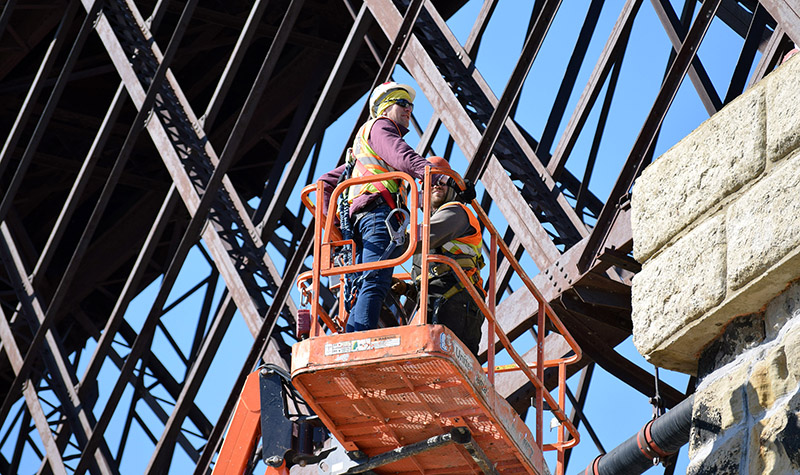
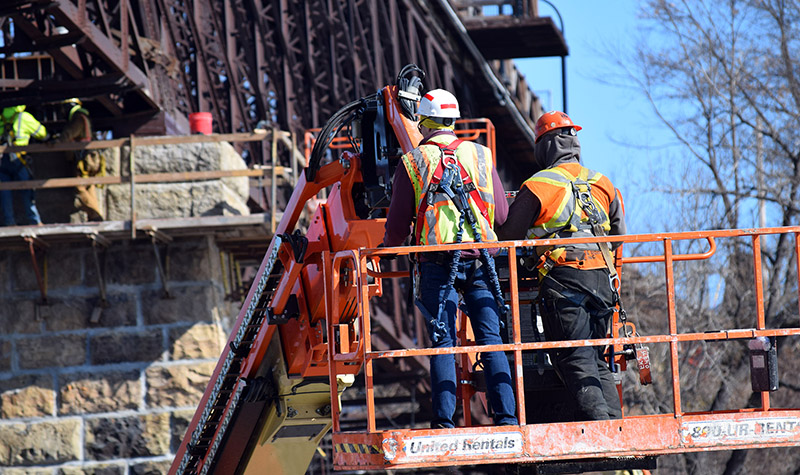
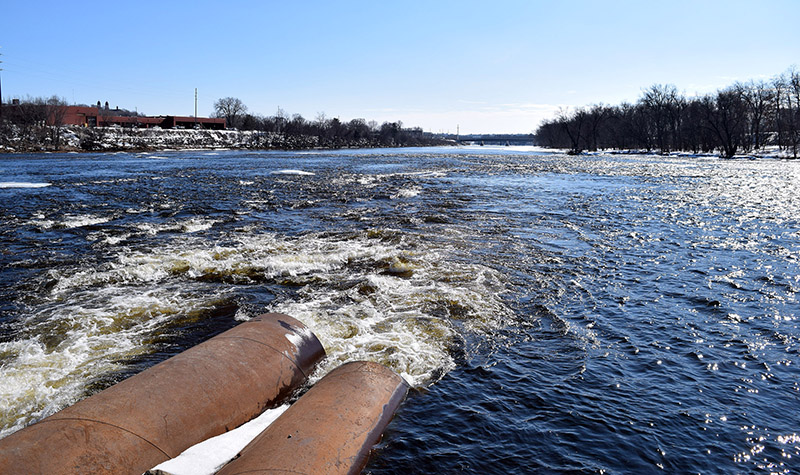
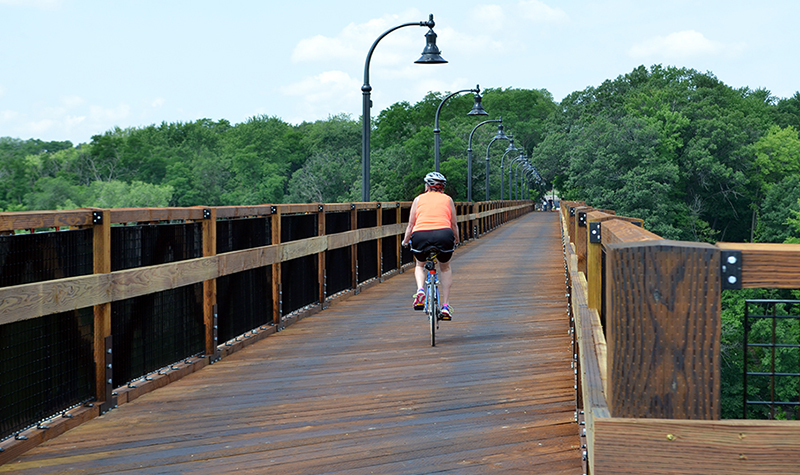
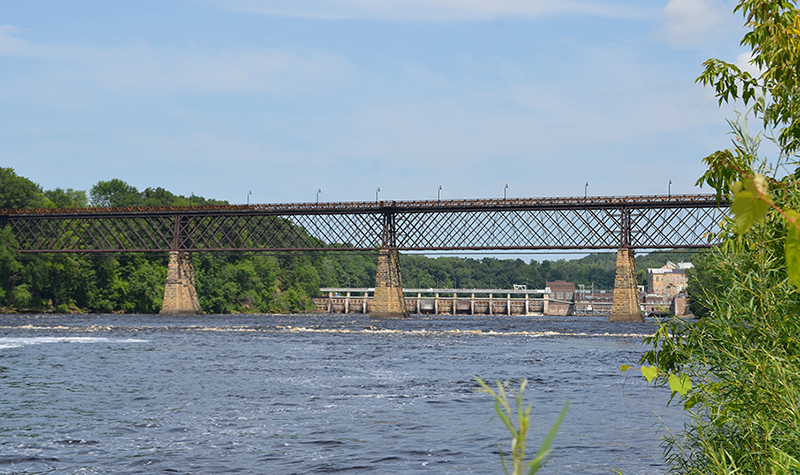





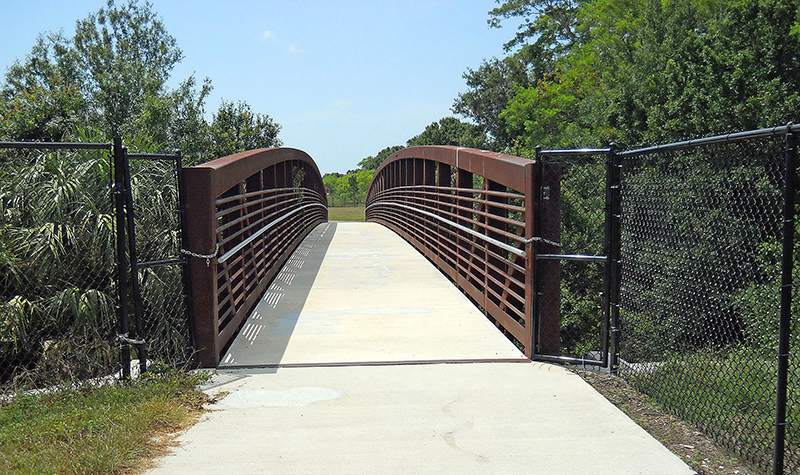
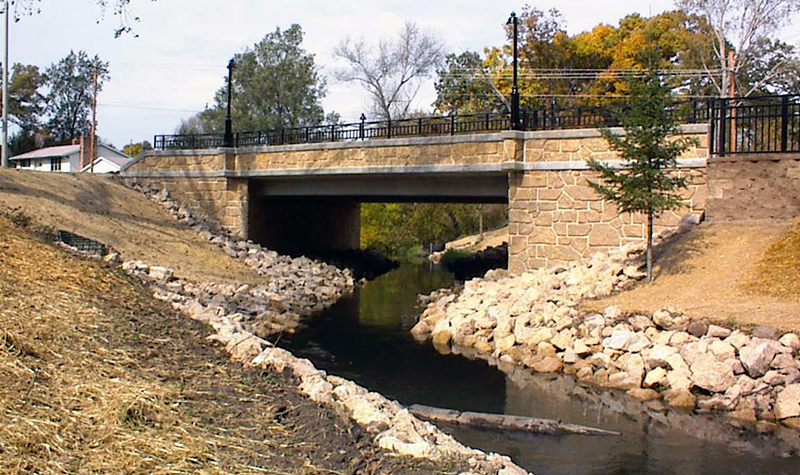
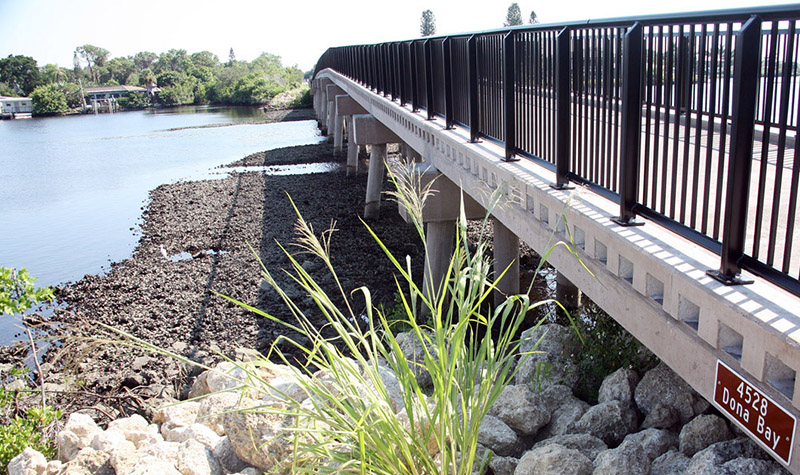
.jpg)
